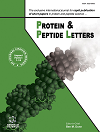
Full text loading...
We use cookies to track usage and preferences.I Understand
This review explores the burgeoning field of macromolecular polymer-based complexes, highlighting their revolutionary potential for the delivery of nucleotides for therapeutic applications. These complexes, ingeniously crafted from a variety of polymers, offer a unique solution to the challenges of nucleotide delivery, including protection from degradation, targeted delivery, and controlled release. The focus of this report is primarily on the design principles, encapsulation strategies, and biological interactions of these complexes, with an emphasis on their biocompatibility, biodegradability, and ability to form diverse structures, such as nanoparticles and micelles. Significant attention is paid to the latest advancements in polymer science that enable the precise tailoring of these complexes for specific nucleotides, such as DNA, RNA, and siRNA. The review discusses the critical role of surface modifications and the incorporation of targeting ligands in enhancing cellular uptake and ensuring delivery to specific tissues or cells, thereby reducing off-target effects and improving therapeutic efficacy. Clinical applications of these polymer-based delivery systems are thoroughly examined with a focus on their use in treating genetic disorders, cancer, and infectious diseases. The review also addresses the challenges and limitations currently faced in this field, such as scalability, manufacturing complexities, and regulatory hurdles. Overall, this review provides a comprehensive overview of the current state and future prospects of macromolecular polymer-based complexes in nucleotide delivery. It underscores the significance of these systems in advancing the field of targeted therapeutics and their potential to reshape the landscape of medical treatment for a wide range of diseases.

Article metrics loading...

Full text loading...
References


Data & Media loading...

